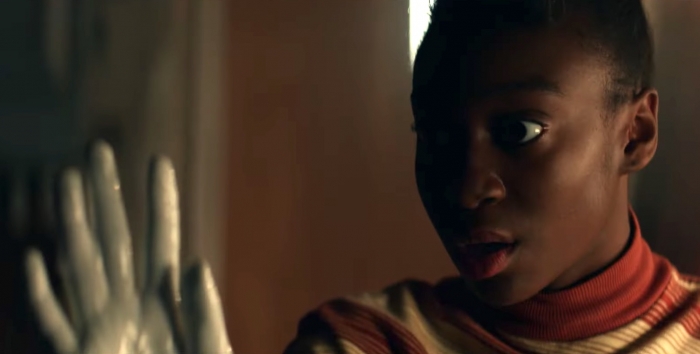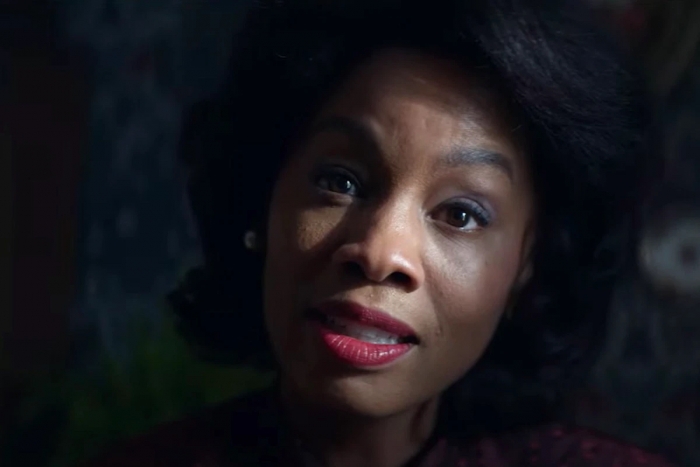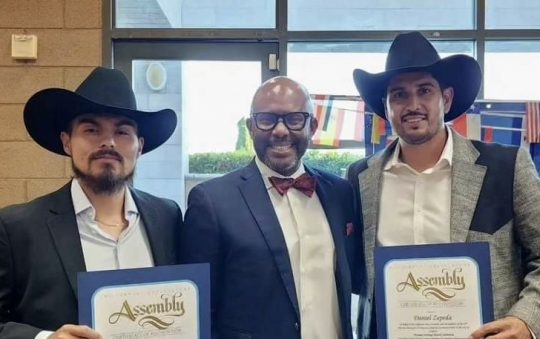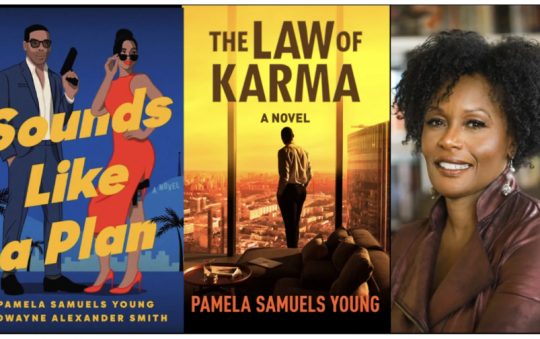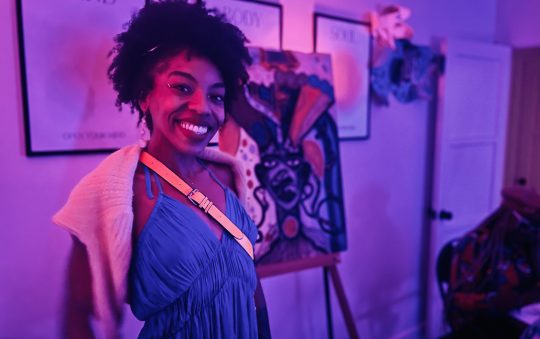Do you know the difference between horror and terror? There is a significant difference and in the new series — “Them” created by breakout talent Little Marvin and executive producer Lena Waithe, you will understand the differences when their new series premieres exclusively on Prime Video, April 9.
In the Hollywood circles that matter, there is an excitement brewing around this limited anthology series that explores terror in America. Season number is set in the 1950s and focuses on an African-American family who moves from North Carolina to an all-White Los Angeles neighborhood (Compton) during the period known as The Great Migration. The family’s idyllic home becomes ground zero where malevolent forces, next-door and otherworldly, threaten to taunt, ravage and destroy them.
The series is created and executive produced by Little Marvin along with executive producers Lena Waithe, Don Kurt, Miri Yoon, David Matthews, and Roy Lee of Vertigo Entertainment. Them is a co-production from Sony Pictures Television and Amazon Studios.
A small group of journalists was invited via Zoom to learn more about Little Marvin, the creator, executive producer and showrunner of the limited anthology series “Them.” “Them” stars Deborah Ayorinde, Melody Hurd, Shahadi Wright Joseph, Alison Pill, and Ashley Thomas.
Here’s what Little Marvin had to share.
ON INSPIRATION
I started writing the show, a few summers back, during a time where I felt that every morning, I was waking up to the same story. I’d go to my phone, look at my social media feed, and would see iphone video, after iphone video of Black folks. Women, children, families being terrorized, in some way. Either by the police or with the threat of the police or [being] watched, harassed, surveyed and it got me thinking (a lot) about my own experiences, personally with that gaze but a history of that gaze. And the terror of navigating in this country [living] in Black skin. It’s not a secret that public spaces have been weaponized against Black folks since the dawn of this country. But what I hadn’t see told in a story was that tension between the public and the private. And that most private and safe of spaces which is the home. Right? The world outside might be crazy but in here we have each other. And my curiosity began with a single question — what happens when that safe space turns on you too? That was the spark.
ON THE AMERICAN DREAM
I think, like all of us, I’ve been thinking a lot about this country. This country that I love, with all of my heart. Where we’ve been and where we’re going, as it relates to the American dream and historically speaking whose gotten their keys to it and who have not, and why. And there is really no more quintessential part of the American dream, in my eyes anyway, than homeownership. It’s a touchstone and a point of great pride, particularly for Black folks. To own one’s home. To create and pass down intergenerational wealth. But as you probably know that has been but a dream for Black folks, in this country. In fact, it’s been a nightmare so the opportunity to tell an American dream story of homeownership but peel back those floorboards, a bit, and interrogate the nightmare that lies beneath.
TERROR VS HORROR
I think that terror and horror have a different ring in the imagination. Let’s face it. Very few of us will experience an actual supernatural horror in our lives, although I would be totally down for that. But terror is something that we’ve all experienced at the national and the domestic level. While we made the show, we had a question that we would ask ourselves, every day, which was what terrifies you more, that sound down in the basement that you can’t explain or that neighbor at the end of the block, who has been staring at your house every single day. In my experience, anyway, it’s that neighbor.
So calling the series [“THEM”] a terror series really roots the horrors, further in the supernatural but also something deeply human, first.
COMPTON AS SEASON ONE LOCATION
Compton [Los Angeles, CA] is a trip. It’s like that ‘wow I never knew’ factor but the sad part about this, is that I could have put this exact, same story anywhere across the South Land. As I dug in, and read tons of books and enveloped myself in the lore of this city, I realized [here] is this place that’s an iconically Black association, I think, in the publics’ imagination pop-culturally, culturally, and musically but that’s not always been true.
Sixty, seventy years ago it was quite White and the folks in East Compton were virtually protective of their whiteness and that was the light bulb moment, for me, and I knew that the story had found its home.
LENA WAITHE AND MIRI YOON — EXECUTIVE PRODUCERS
It was instantaneous. I must first thank and give props to badass, executive producer Miri Yoon, who is fantastic and she put us together, very early in this process. It was clear to both of us, right away that we wanted to make the same show. We wanted to do an unapologetically explore the terror of being Black, to unapologetically explore the terror and the trauma, at the root of this country. It was a marriage, right away.
This interview has been edited for length and clarity.




